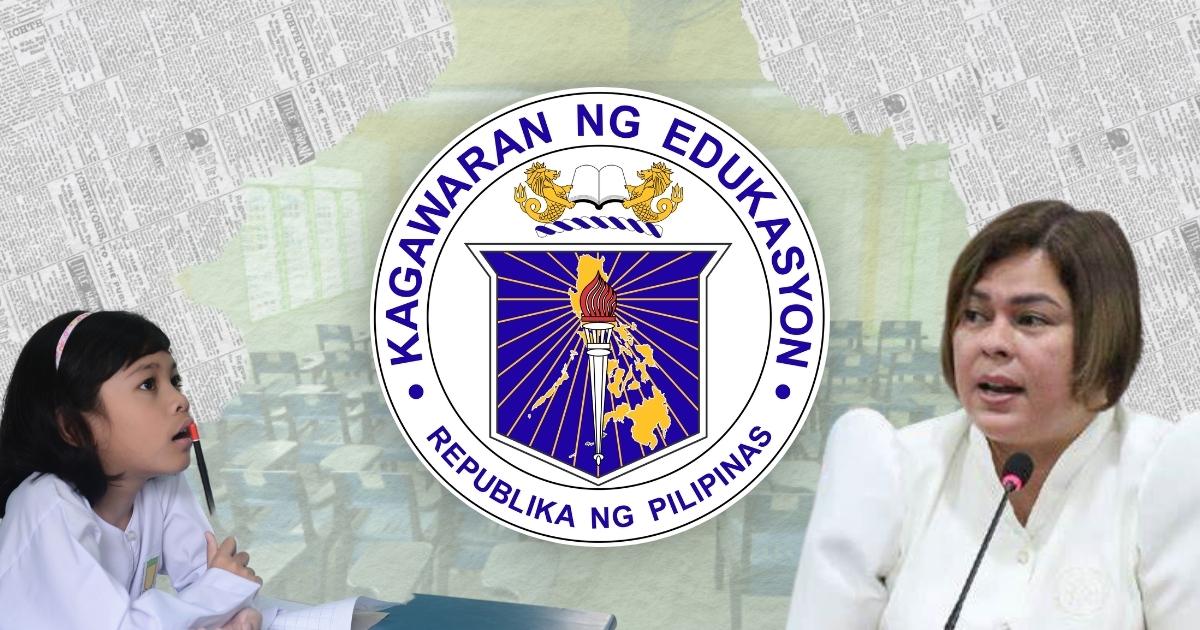On August 10, the Department of Education (DepEd) launched a new version of the K-10 curriculum known as "Matatag" in response to the learning crisis in the Philippine education system. Since its inception, parents of students and even experts have expressed concern over the new curriculum, including the question of whether the K-12 program will be abolished. Thus, to further enlighten people about the new curriculum, here are some FAQs of what the new k-10 program is all about.
What is the new K-10 curriculum?
After two years of review, consulting various teachers, students, higher education institutions, and experts, and gaining 96 percent approval from a total of 4,843 respondents, the Matatag Curriculum, otherwise known as the K-10 program, was officially launched.
Previously, the K-10 curriculum, originally derived from the K-12 curriculum, focused on Filipino, English, Mathematics, Araling Panlipunan (social studies), MAPEH (music, arts, physical education, and health), and Edukasyon sa Pagpapakatao (humanities). Under the revised K-10 program, there will only be five (5) areas to focus on: Language, Reading and literacy, Mathematics, Makabansa (nationalism), and Good Manners and Right Conduct (GMRC).
Around 70% of the current curriculum is cut to give more time to what DepEd calls foundational skills (referring to the aforementioned five areas) for a better learning outcome.
Why is there a new K-10 curriculum?
Vice President and concurrent Department of Education (DepEd) Secretary Sara Duterte said that the K-12 curriculum was congested and the foundational subjects from kindergarten to Grade 10 were outdated; hence, a revision was needed.
As the pandemic contributed to a desolate ranking of the country in global competencies, it has "burned" and "failed" the teachers. Duterte said that the system burdens the teacher with time-consuming administrative tasks, a system that provides no adequate support, and robs them of the opportunity to professionally grow and professionally teach, assist, and guide the learners.
Also, based on DepEd's assessment of the K-12 curriculum, the results showed "insufficient knowledge [among teachers] on developing 21st-century skills, including higher-order thinking skills among learners."
In relation to this, DepEd’s way of addressing these was to revamp the K-12 program and roll-out a new program to focus on the essential elements of learning.
How will K-10 be implemented?
This revised curriculum will be implemented through various phases. The implementation will begin in Kinder and Grade levels 1, 4, and 7 by SY 2024 to 2025; Grades 2, 5, and 8 by SY 2025 to 2026; Grades 3, 6, and 9 by SY 2026 to 2027; and Grade 10 by SY 2027 to 2028.
With this, by 2028, the Matatag Curriculum for Kindergarten to Grade 10 under the K-12 program will be fully implemented.
Moreover, per grade level, the subjects will focus on the following:
For 1st grade – Reading and literacy, language, mathematics, Makabansa, GMRC
2nd grade – Filipino, English, math, Makabansa, GMRC
3rd grade – Filipino, English, math, Makabansa, GMRC, science
4th to 10th grade: Filipino, English, math, science, Araling Panlipunan (social studies), technology and livelihood education, GMRC, MAPEH
Note that the Makabansa subject – called Sibika, Kultura, Kasaysayan at Kagalingang Pangkatawan or SIKaP in the draft revised curriculum, will merge Araling Panlipunan (AP) and Music, Arts, Physical Education and Health (MAPEH) and will be taught in Grades 1 to 3.
What about Grades 11 and 12?
With the implementation of the Matatag Curriculum, this doesn't mean that it will be back to basics, where there's no need to finish grades 11 and 12. Senior High School will still be implemented and needs to be finished to be able to graduate on the secondary level and be required to pursue tertiary education.
The new program was simply a recalibration of the Kindergarten to Grade 10 curriculum and would not affect the curriculum in senior high school. As per writing of this article, DepEd is still reviewing the senior high curriculum and will unveil the revisions sometime in 2024.
What about the learning materials and when will it be ready?
The DepEd will start the procurement of new textbooks and other learning materials with a meeting set with book publishers on Aug. 11. Further, these materials will be under development to be rolled out for the 2024-2025 school year.
What are the new features of the new K-10 curriculum?
One of its features is the "decongestion" of the learning competencies, from over 11,700 in the old k-12 curriculum to 3,664 in this revised version.
There will also be fewer subjects or learning areas in the early grade levels, specifically from kindergarten to Grade 3, to focus on foundational skills such as literacy and numeracy.
This curriculum also highlights the comeback of Good Manners and Right Conduct (GMRC) as a learning area or subject under Republic Act (RA) 11476, or the GMRC and Values Education Act of 2020.
Further, an additional feature of the new curriculum is the incorporation of “peace competencies”. As per Sara Duterte, this curriculum 'highlights non-violent actions and the development of conflict-resolution skills in learners'.
Lastly, there will no longer be a separate mother tongue subject, but officials clarified that the mother tongue or the students’ first language will still be used as a medium of instruction when teaching other subjects.


